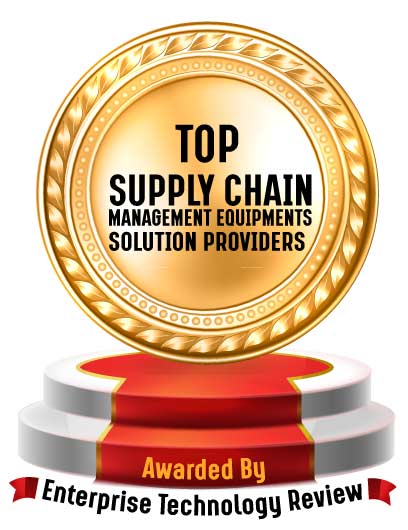
The Role of IOT in Supply Chain Visibility
Enterprise Technology Review | Thursday, July 02, 2020

Visibility in supply chain is crucial and IoT will help organizations to collate real-time data and take necessary steps to smoothen the operations.
Supply chain visibility (SVC) has gained considerable importance since the organizations have outsourced parts of their supply chain and lost control and visibility over what used to be part of their operations. On the other hand, supply chain activities are better instrumented and measured, compared to the last decade. Internet of things (IoT) has changed the supply chain management game. The collection of interconnected physical devices can monitor, report, and exchange crucial data via data or Wi-Fi networks.
 Presently, organizations have accurate information available quickly about all moving parts in the supply chain. However, the nodes gathering data are similar to narrowly focused spotlights on a darkened stage. The bright visible spots are the factories, distribution centers, and stores. A slight discontinuity in the data that is essential to manage the supply chain makes transparency impossible. In such situations, real-time data is crucial as compared to the historical data as the continually changing factors impact the supply chain. Realtime information facilitates the locating of the goods online, offline, and from modality to modality, anywhere, anytime during the entire duration of the journey. Such a continuous flow of information helps organizations avert disruption in the rest of the chain in case an unplanned event arises.
Presently, organizations have accurate information available quickly about all moving parts in the supply chain. However, the nodes gathering data are similar to narrowly focused spotlights on a darkened stage. The bright visible spots are the factories, distribution centers, and stores. A slight discontinuity in the data that is essential to manage the supply chain makes transparency impossible. In such situations, real-time data is crucial as compared to the historical data as the continually changing factors impact the supply chain. Realtime information facilitates the locating of the goods online, offline, and from modality to modality, anywhere, anytime during the entire duration of the journey. Such a continuous flow of information helps organizations avert disruption in the rest of the chain in case an unplanned event arises.
However, the consumption of data is crucial. At present, the available data is siloed and found in multiple systems spread all over the enterprise, in the hands of the supply chain partners spread over time zones, continents, languages, and thus tough to aggregate. Organizations need to streamline the data, digest it, and use it intelligently in one place. Developers are working on smart, affordable tracking devices coupled with an intelligent data platform known as a self-healing chain. With this amalgam, the organizations can correct, react, and buffer their supply chain, both reactively and proactively. The self-healing chain provides the flexibility to increase inventory when demand is higher than planned or adjust routes because of natural calamities.
Most importantly, the organizations can dampen the irregularity in their supply chain by anticipating and responding to the issues that matter. At the same time, using historical data, the planning efficiency dramatically increases, preventing customer dissatisfaction. The road ahead of the supply chain is full of potential, and in the coming years, this landscape will face a lot of disruption.
See also: Top IoT Companies
Read Also









